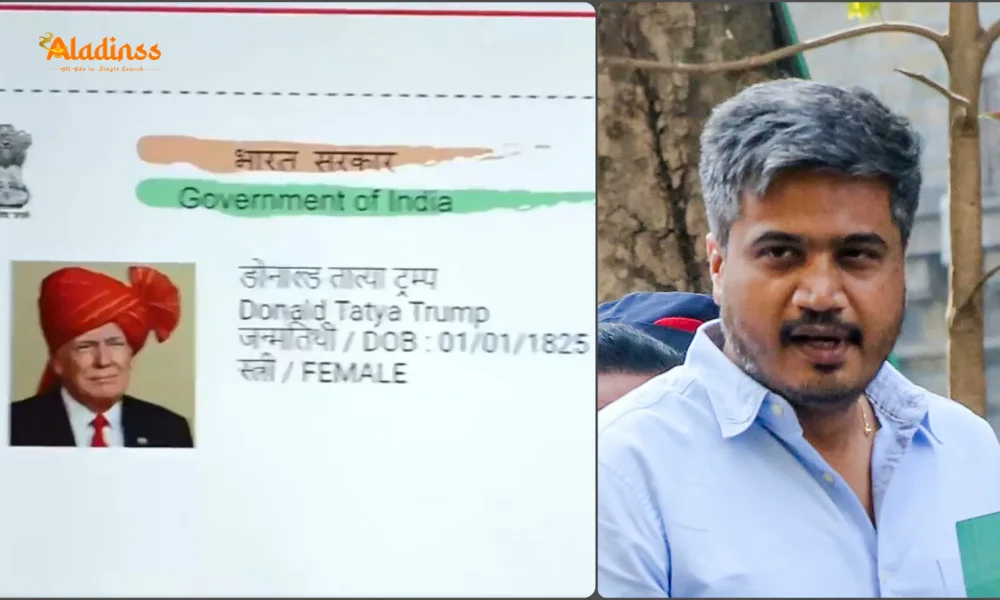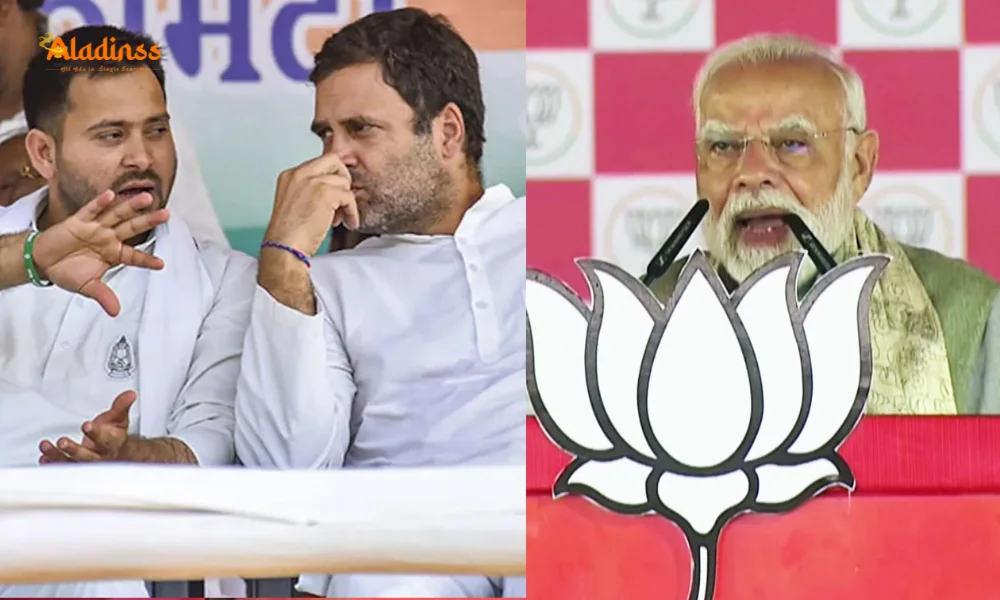Shocking! FIR on Rohit Pawar for Trump Fake Aadhaar Stunt

FIR Filed Against NCP MLA Rohit Pawar for Creating Fake Trump Aadhaar Card
In a stunning political development, Maharashtra’s South Region Cyber Police have registered an FIR against NCP (Sharad Pawar faction) MLA Rohit Pawar for allegedly generating and circulating a forged Aadhaar card in the name of US President Donald Trump. The complaint, filed by a BJP social media coordinator, accuses Pawar of misusing digital tools during a press conference to expose vulnerabilities in India’s national identity system.
The case, lodged under multiple sections of the Information Technology Act and Indian Penal Code, highlights growing concerns over identity fraud and data integrity. Pawar had demonstrated how fake Aadhaar cards could be created for just Rs 20 using unauthorized websites — a move now backfiring into a criminal investigation.

What Happened at Rohit Pawar’s Press Conference?
On October 16, during a media interaction in his Karjat-Jamkhed constituency, Rohit Pawar staged a live demonstration to expose loopholes in the Aadhaar ecosystem. Using an unverified online portal, he generated a sample Aadhaar card featuring Donald Trump’s name, photo, and a local Maharashtra address — all within minutes and at a cost of just Rs 20.
Pawar claimed the exercise was intended to sound an alarm over fake voter IDs and electoral malpractice. “If I can create Trump’s Aadhaar so easily, imagine how many bogus entries exist in voter lists,” he told reporters. He urged the Election Commission and UIDAI to tighten verification protocols before the upcoming Maharashtra assembly polls.
However, the stunt has now triggered legal backlash. The complainant argued that even a “demonstration” involving forged government documents violates the law, regardless of intent.
FIR Details: Charges Under IT Act and BNS
The FIR has been registered under Sections 336(2), 336(3), 336(4), 337, 353(1)(B), 353(1)(C), and 353(2) of the Bharatiya Nyaya Sanhita (BNS) — covering forgery, identity theft, and dissemination of false electronic records — along with Section 66(C) of the IT Act for identity theft using computer resources.
Named accused include:
- Rohit Pawar (MLA, NCP-SP)
- Owner and operator of the fake Aadhaar generation website
- Individuals involved in designing and circulating the forged document
A senior cyber police official stated: “Creating or sharing forged identity documents — even for awareness — is a punishable offense.” The investigation will now trace the digital footprint, server logs, and payment trails linked to the transaction.
BJP Accuses Pawar of Endangering National Security
BJP spokesperson Navnath Ban welcomed the FIR, calling it a “necessary step to protect India’s data sovereignty.” He alleged that Pawar’s actions — though cloaked as public service — could inspire cybercriminals and undermine trust in official systems.
“This is not awareness; this is glorification of cybercrime,” Ban said. He demanded Pawar’s immediate suspension from the assembly and a high-level probe into whether similar fake IDs were used in past elections.
The BJP has also written to the Union Home Ministry, seeking UIDAI intervention and a nationwide audit of Aadhaar-linked voter discrepancies.
Rohit Pawar Defends Move as “Responsible Journalism”
Responding to the FIR, Rohit Pawar remained defiant. “I exposed a Rs 20 national security threat — and now I’m being punished for it?” he posted on X (formerly Twitter). He claimed the demonstration followed ethical guidelines: no real biometric data was used, and the website was publicly accessible.
Pawar challenged the BJP: “Instead of filing cases against whistleblowers, fix the system. How many fake Aadhaars are already in circulation?” He announced plans to move the Bombay High Court, seeking to quash the FIR on grounds of public interest.
Aadhaar Vulnerabilities: A Long-Standing Concern
The incident has reignited debates over Aadhaar’s security architecture. Despite biometric locks, dark web marketplaces openly sell fake Aadhaar generation services starting at Rs 10–50. Cybersecurity firm Kaspersky reported over 1.2 million fake Aadhaar records detected in 2024 alone.
Common methods include:
- Photoshopped templates with stolen photos
- QR code spoofing using dummy enrollment data
- Exploiting lax KYC norms at local centers
UIDAI insists that biometric authentication prevents misuse, but critics argue that visual forgeries still enable bank account openings, SIM card activations, and voter enrollment — especially in rural areas with limited verification infrastructure.
Political Fallout: Maharashtra Assembly Polls in Sight
With Maharashtra heading to polls in 2026, both Maha Vikas Aghadi (MVA) and Mahayuti alliances are weaponizing the issue. The NCP-SP has accused the BJP of “vendetta politics,” while the ruling coalition claims Pawar’s actions validate their narrative of opposition-sponsored chaos.
Shiv Sena (UBT) leader Sanjay Raut called the FIR “a distraction from real issues like farm distress and inflation.” Meanwhile, Deputy CM Devendra Fadnavis hinted at stricter cyber laws: “No one is above the law — not even MLAs playing digital pranks.”
What Happens Next in the Investigation?
Cyber police have seized Pawar’s laptop and phone for forensic analysis. Teams are also raiding data centers in Pune and Mumbai to shut down the offending website. Sources say the domain was registered via a proxy server in Singapore, complicating traceability.
If convicted under Section 66(C) of the IT Act, Pawar faces up to 3 years imprisonment and a fine of Rs 1 lakh. BNS provisions carry penalties up to 7 years for forgery with intent to harm national interest.
Legal experts predict a prolonged battle. “Public interest demonstrations have been protected in the past — think Arundhati Roy or Teesta Setalvad cases,” said advocate Yug Chaudhry. “But using a sitting US President’s identity crosses a diplomatic red line.”
UIDAI’s Response and Reform Roadmap
The Unique Identification Authority of India (UIDAI) issued a statement condemning the “irresponsible portrayal” of Aadhaar vulnerabilities. It announced:
- Launch of Aadhaar 2.0 with facial recognition + liveness detection by March 2026
- Mandatory OTP + biometric dual authentication for all updates
- AI-powered fraud monitoring across 1.4 billion records
- Partnership with RBI to block bank accounts linked to fake Aadhaars
CEO Amitabh Kant emphasized: “Aadhaar is the world’s most secure identity system. Isolated misuse does not reflect systemic failure.”
Broader Implications for Digital India
The Rohit Pawar controversy underscores the double-edged sword of digital awareness. While ethical hacking and red-team exercises are globally accepted, India’s legal framework remains ambiguous on “demonstration forgery.”
Cybersecurity think tank Data Security Council of India (DSCI) has proposed a “Responsible Disclosure Policy” allowing citizens to report vulnerabilities without fear of prosecution — provided no real data is compromised.
As the case unfolds, one thing is clear: in the age of deepfakes and AI-generated IDs, the line between whistleblowing and wrongdoing has never been thinner. For now, Rohit Pawar’s Trump Aadhaar stunt has achieved what he intended — putting Aadhaar security under the spotlight — but at a steep personal and political cost.
Comment / Reply From
No comments yet. Be the first to comment!











